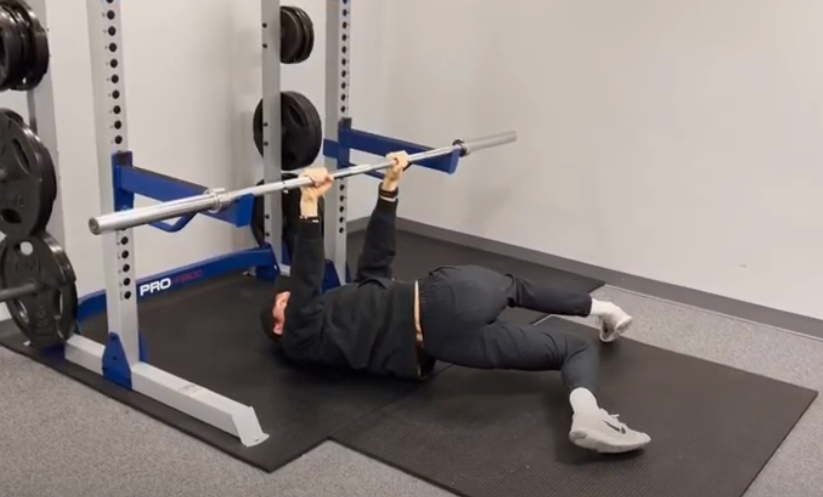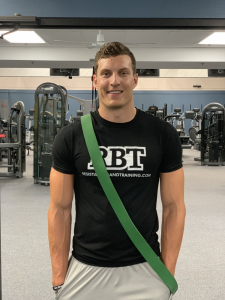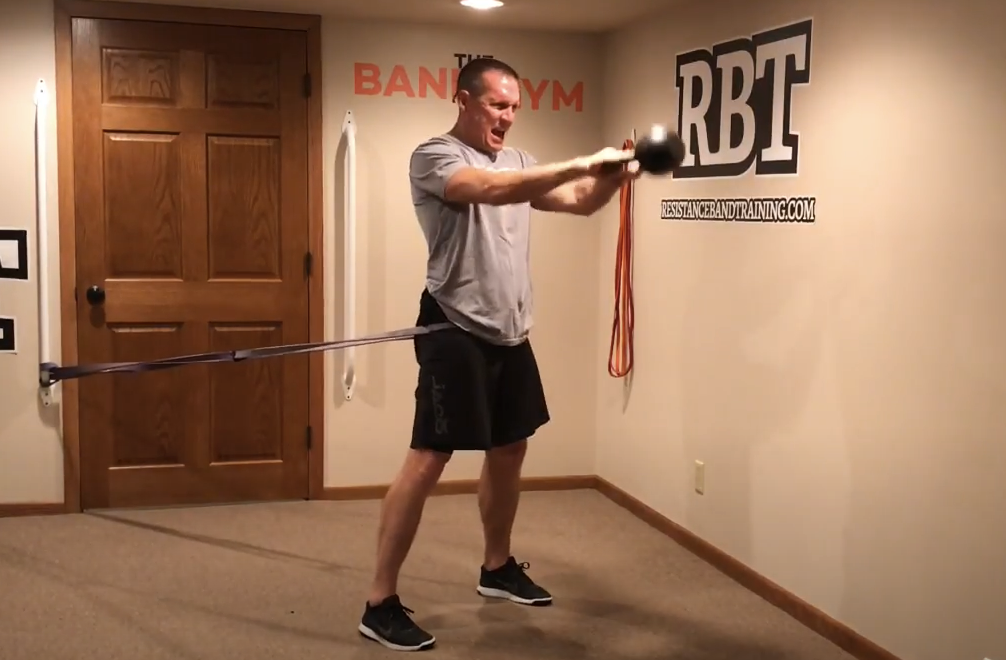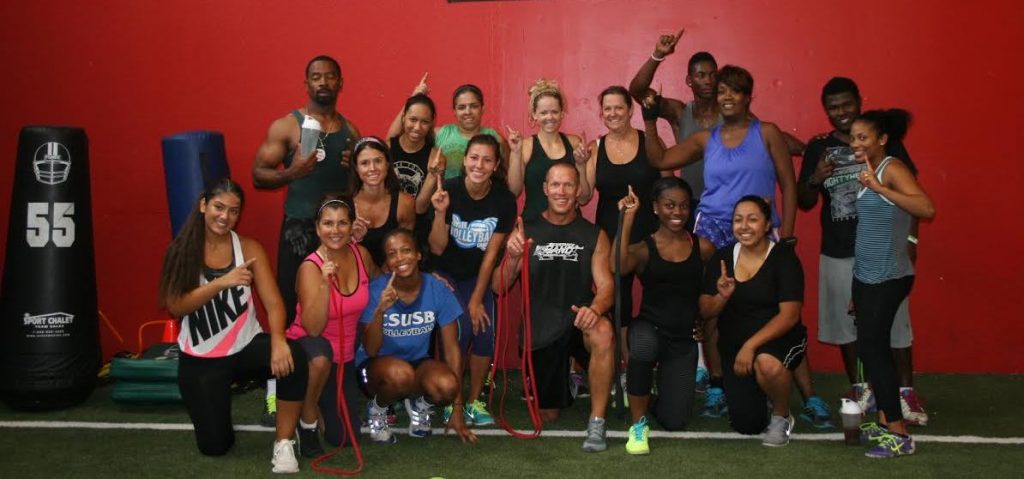Is Rotation Dangerous?
Are exercises like the one shown below, an injury hazard?
First, let me ask you something, do you play golf? Tennis? Pickleball? Softball? Basketball? Hockey? Baseball? Football?
Do you do yard work? Or garden? Carry things? Shovel?
If so, your body is going to rotate. It happens. It is one of the 3 primary planes of movement that we must have proficiency in.
When we look at our core structurally, we will see that 87.5% of the musculature is directed horizontally or diagonally (as opposed to vertically) (1). This would tell us that the human body, specifically the core, is built in a manner to allow for rotation.
In no way am I prescribing the exercise shown above. This exercise is extremely advanced and would need to be progressed correctly based on your overall fitness and mobility level.
However, if you look at that and call it dangerous, check out the video of Tiger Woods swinging a golf club below.
Now, let’s ask the same question, using the same logic, is this dangerous?
Your body is built to move and explore. As part of that, they are built to rotate (and also resist rotation – but that’s a topic for another day). Unless we train it, utilize it and perfect it, we will lose that ability.
Furthermore, if we wish to complete athletic movements that challenge us in a rotational manner, like golf, we need to expose our bodies to those movement patterns prior to completing them in the more stressful manner of sport.
What actually is rotation?
When looking at the joint level, we see that certain bodily segments were created to drive rotation: the hips, anterior torso, spine and shoulders primarily. Smaller joints like the wrists and ankles also create rotation, but do so in a more isolated manner. Being able to obtain adequate levels of rotation at the individual joint level is a prerequisite before we can look more holistically.
For example, lacking lead hip internal rotation in the golf swing has been shown to increase the amount of torque (and subsequent injury risk) placed on the lower back (2).
Let’s solve the mobility issue locally. By increasing our lead hip internal rotation, and then we can translate that into our holistic movement.
Looking through a holistic lens, we build bodily rotation by separating our hips from our shoulders.
Now, re-watch that video of Tiger. Notice during his backswing how his shoulders turn away to a much greater degree than his hips do. This creates the rotation (shoulder and hip separation) he needs to load the golf swing, and subsequently unload during the downswing.
Rotational loading isn’t very different from the exercise shown at the beginning of this article. It’s also not very different from an individual raking their leaves or shoveling snow (shout out to my fellow Midwesterners).
All rotational movement is loaded in a similar manner
Knowing this, let’s continue to expose our body’s to rotation so that they are equipped to handle it, and thrive with it.
Would a boxer ever not train a punching movement?
Would a football kicker ever not practice kicking?
Then why should a human being not build rotation?
Rotation may be the missing key that unlocks your movement in a newfound way.
Here are 5 exercises you can do with resistance bands:
- High plank band pull-a-part rotations
- ½ Kneeling band pull-a-part rotations
- In-line banded wood chops
- Banded reverse lunge with rotation
- Banded mountain climbers – knee to opposite elbow.
These will help boost your rotation in a low impact, low risk manner
Have an elite day.
Carter Schmitz, CSCS
Sources
-
- Santana, J.C. 2000. Functional Training: Breaking the Bonds of Traditionalism (Companion Guide). Boca Raton, FL: Optimum Performance Systems.
- Nic Saraceni, Kevin Kemp-Smith, Peter O’Sullivan, and Amity Campbell (2018). The Relationship Between Lead Hip Rotation and Low Back Pain in Golfers– A Pilot Investigation. International Journal of Golf Science, 2017, 6, 130 -141
- Vad VB, Bhat AL, Basrai D, Gebeh A, Aspergren DD, Andrews JR. Low back pain in professional golfers: the role of associated hip and low back range-of-motion deficits. Am J Sports Med. 2004;32(2):494-497. doi:10.1177/0363546503261729
- Murray, E., Birley, E., Twycross-Lewis, R., & Morrissey, D. (2009). The relationship between hip rotation range of movement and low back pain prevalence in amateur golfers: an observational study. Physical Therapy in Sport, 10(4), 131-135.
***********************
About Carter Schmitz
I graduated from the University of St. Thomas in 2019 with a business degree and a minor in exercise science. While there, I played football (as long as we consider being a kicker, playing football) and found two of the deepest passions in life – learning and human performance. Since then, I have become a certified strength coach and have had the opportunity to train hundreds of athletes ranging from the middle school to the professional level.
I believe…
in building humans first, athletes second.
that everybody has extraordinarily high amounts of value to offer.
that the pursuit of improvement will lead to growth, no matter the outcomes.
Moving forward, I will be attending graduate school in order to continue my pursuit of growth and learning as well as be able to provide additional value to my athletes. I plan on continuing to seek the betterment of my athletes, myself and my community, and empowering growth along the way.
Be sure to head over and check out my Instagram and other blog posts at the links below:
Instagram – https://www.instagram.com/coach_carter_schmitz/
Blog – https://schmitzstrength.wixsite.com/schmitzstrength




